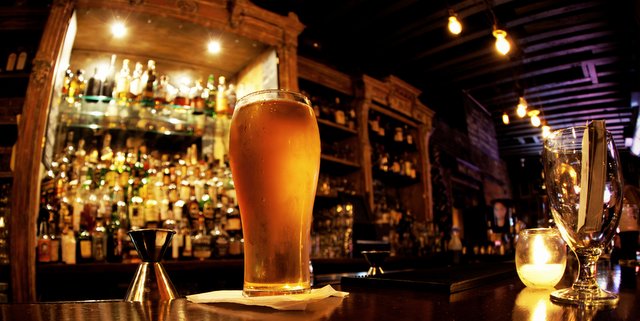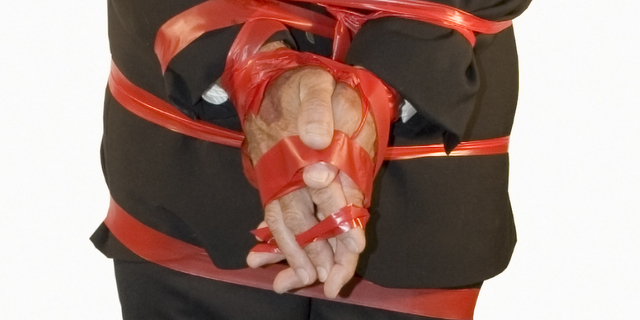
Economic impact with industry growth
Given the restrictive nature of existing laws and regulations that effect the Oklahoma craft brewing industry, it is useful to estimate what the economic impact of the industry would be if production increased. In other words, relaxing certain laws would have a stimulating effect on Oklahoma craft brewing production, which would result in a larger economic impact. I present a range of estimates assuming the Oklahoma craft brewing industry increased production by 10, 25 or 50 percent. Note that multiple firms I surveyed expressed more than 50 percent growth in 2015, and some expressed triple digit growth. According to IRI, the national average for growth in craft beer volume sales in 2015 was 18.8 percent.
For the growth regression analysis, I use data on total craft beer production in barrels, the population of the state, the excise tax rate per gallon of strong beer and the employment-to-population ratio as determining factors. Using the growth regression estimates, I am able to estimate how the craft brewing industry’s economic impact will change if the industry produces more craft beer holding all other factors constant. Table 4, below, shows how much additional economic impact can be expected if the industry produced 10, 25 and 50 percent more craft beer.
Table 4. Economic Impact (EI) with Industry Growth
| % Growth | Estimated % Increase in EI | Additional EI | 95% Range | ||||
| 10% | 2.53% | $10.50 MM | $9.42 | $11.58 | |||
| 25% | 6.31% | $26.25 MM | $25.17 | $27.33 | |||
| 50% | 12.63% | $52.50 MM | $51.42 | $53.58 | |||
If the Oklahoma craft brewing industry expanded by only 10 percent, economic activity would be between $9.42 million and $11.58 million higher per year. This would amount to a total impact of over $425 million. Assuming a more aggressive growth path, the craft brewing industry could attribute between $51.42 million and $53.58 million more in economic activity per year. This would amount to over $465 million of economic activity.
Among the brewers that I surveyed, the median response for how much production increased was 51 percent. Using these estimates, I expect the 2015 economic impact to be approximately $469.4 million. This represents a 12.9 percent increase over the 2014 impact. Note that this estimate may underestimate the actual growth in economic impact because I only used responses from firms that produced in 2014. A number of new breweries began commercial production in 2015 and are thus not included in the construction of the 51 percent growth estimate.
Direct tax revenues
Beyond the employment and income effects that the OKCB industry has had for their own employees and related industries along the supply chain, the OKCB industry contributes to the state economy as a source for tax revenues. The OKCB industry stands out, though, because of the nature of alcohol taxation. All beer production in the state of Oklahoma is taxed at the wholesale level as an excise tax, and at the retail level as an ad valorem tax.
The current wholesale tax for beer in Oklahoma is $0.36 cents per gallon of beer that has an ABW of 3.2 percent, and $0.40 cents per gallon of “strong” beer that is above 3.2 percent ABW. Note that craft beer has historically had an ABW in excess of 3.2 percent due to the type of beer that is demanded.
Where craft beer stands out as a significant tax revenue source is through the retail ad valorem tax. All beer sales in liquor stores are taxed at 8.35 percent, and beer sales sold in restaurants, bars and brewpubs are taxed at 13.5 percent. Craft beer typically commands a higher price than competitors in the market due to the recent surge in popularity and increasing taste preferences for stronger beers. This has a beneficial effect on tax revenues because items that have a higher price return a larger tax revenue per unit.
To estimate the amount of direct taxes that the OKCB industry raised, I used 2014 production information provided by the Brewer’s Association and sales type estimates (draft vs. bottle production, amount sold to restaurants vs. liquor stores, etc.) provided by a survey of Oklahoma craft brewing firms. For non-respondent companies, I assumed that their sales type (draft vs. bottle) and destination (restaurant vs. liquor store) is equal to the median response of all brewers.
In 2014, the OKCB was responsible for approximately $5.6 million in tax revenues. These tax revenues were driven mostly by bar and restaurant sales which amounted to approximately $4.9 million. This is expected, though, given that craft beer commands a higher price in the market than its competitors. Moreover, given the existing restrictions on strong beer purchase, it makes sense that the majority of strong beer would be consumed in restaurants or bars. Wholesale taxes accounted for $322,275 in tax revenue and liquor store taxes accounted for $358,461.
RELATED: A primer on bonds, taxes and popular markets for new craft breweries
Tax revenues with industry growth
Table 5, below, shows the amount of taxes that would be generated if production grew by 10, 25 or 50 percent while holding all other assumptions constant (e.g. amount of 3.2 percent beer production, percentage of total volume sold at establishments that allow on-site consumption as opposed to liquor stores, etc.). Note that I used actual volume growth for firms when I have self-reported data, and the various growth assumptions for non-respondent firms (10, 25 and 50 percent). From my survey, the minimum amount of growth in 2015 was reported as 11 percent, and the maximum amount of growth was 350 percent. The estimates presented in this section will likely underestimate tax revenue growth because I only use data for firms that produced in 2014. A number of new breweries began commercial production in 2015 and are thus not included in this analysis.
Table 5. Tax Revenue with Production Growth
| Tax Source | 10% | 25% | 50% | ||||
| Total Tax Revenue | $ 7,739,338.50 | $ 8,211,061.33 | $ 8,997,266.05 | ||||
| Liquor Store Taxes | $ 448,336.59 | $ 479,515.61 | $ 531,480.65 | ||||
| Restaurant and Bar Taxes | $ 6,859,156.27 | $ 7,272,164.02 | $ 7,960,510.28 | ||||
| Wholesale Taxes | $ 431,845.64 | $ 459,381.70 | $ 505,275.13 | ||||
| Note: Actual growth percentage used for firms that provided production data, various growth percentages used for all other firms. | |||||||
Conclusion
The national trend toward increased craft beer consumption has resulted in a veritable increase of economic activity that is directly attributable to craft brewers. At the national level, the craft brewing industry generated $55.7 billion in economic activity and more than 424,000 jobs in 2014. While this growth in craft brewing has certainly taken root in Oklahoma, the full potential of this industry remains untapped.
In 2014, the OKCB industry had a $415.7 million economic impact. Put another way, each 12-ounce pour of beer produced in Oklahoma generated $65.94 worth of economic activity. In taxes alone, the Oklahoma craft brewing industry was responsible for approximately $5.6 million in direct tax revenues.
Given the existing laws that restrict craft beer production and consumption, there is a large amount of growth potential that could result in a substantial economic benefit to the state. If some or all of these laws were relaxed, an additional $10.5 million in economic activity could be realized assuming that the OKCB industry grew by only 10 percent. Assuming a more aggressive, yet feasible, growth path of 50 percent, economic activity will increase by approximately $52.5 million. In a state that prides itself in supporting entrepreneurship, it is natural for the burgeoning craft brewing industry to take hold. If restrictive state alcohol policies are amended, the OKCB industry can have a significant impact across the state.
Travis Roach is a Ph.D. in the Department of Economics at the College of Business, University of Central Oklahoma. We thank him for this excellent info.
References
Baughman, R., Conlin, M., Dickert-Conlin, S., Pepper, J., 2001. Slippery when wet: the effects of local alcohol access laws on highway safety. Journal of Health Economics 20, 1089-1096.
Brewers Association, 2015. “Economic Impact” https://www.brewersassociation.org/statistics/economic-impact-data/ Accessed October 20, 2015.
Fernandez, J., Gohmann, S., and Pinkston, J., 2016. “Breaking Bad: Are Meth Labs Justified in Dry Counties?” Working paper available at http://louisville.edu/faculty/j0gibs02/faculty-jmfern02
The Economist, 2015. “The heirs of Al Capone: Dry counties have more meth labs” http://www.economist.com/news/united-states/21669951-dry-counties-have-more-meth-labs-heirs-al-capone
Tax Foundation, 2015. “How High Are Beer Taxes in Your State?” http://taxfoundation.org/blog/how-high-are-beer-taxes-your-state Accessed December 12, 2015.
Acknowledgements
I am thankful for access to statistics and production data from Bart Watson, economist for the Brewers Association.





Oklahoma’s craft brewing economic impact report 2016 https://t.co/BOiqoIHQU6 via @craftbrewingbiz
Great article on Oklahoma’s craft brewing economic impact https://t.co/j7qHExH2pX via @craftbrewingbiz
Oklahoma’s craft brewing economic impact report 2016 https://t.co/Llm4zZBMnm via @craftbrewingbiz
#CraftBeer #CraftBrewing #Beer #BeerBiz The ultimate Oklahoma craft brewing economic impact report https://t.co/yz5rXyxQtj
RT @CraftBrewingBiz: Oklahoma’s craft brewing economic impact report, local laws are restricting growth @UCOBronchos https://t.co/EdC7mb29Pu